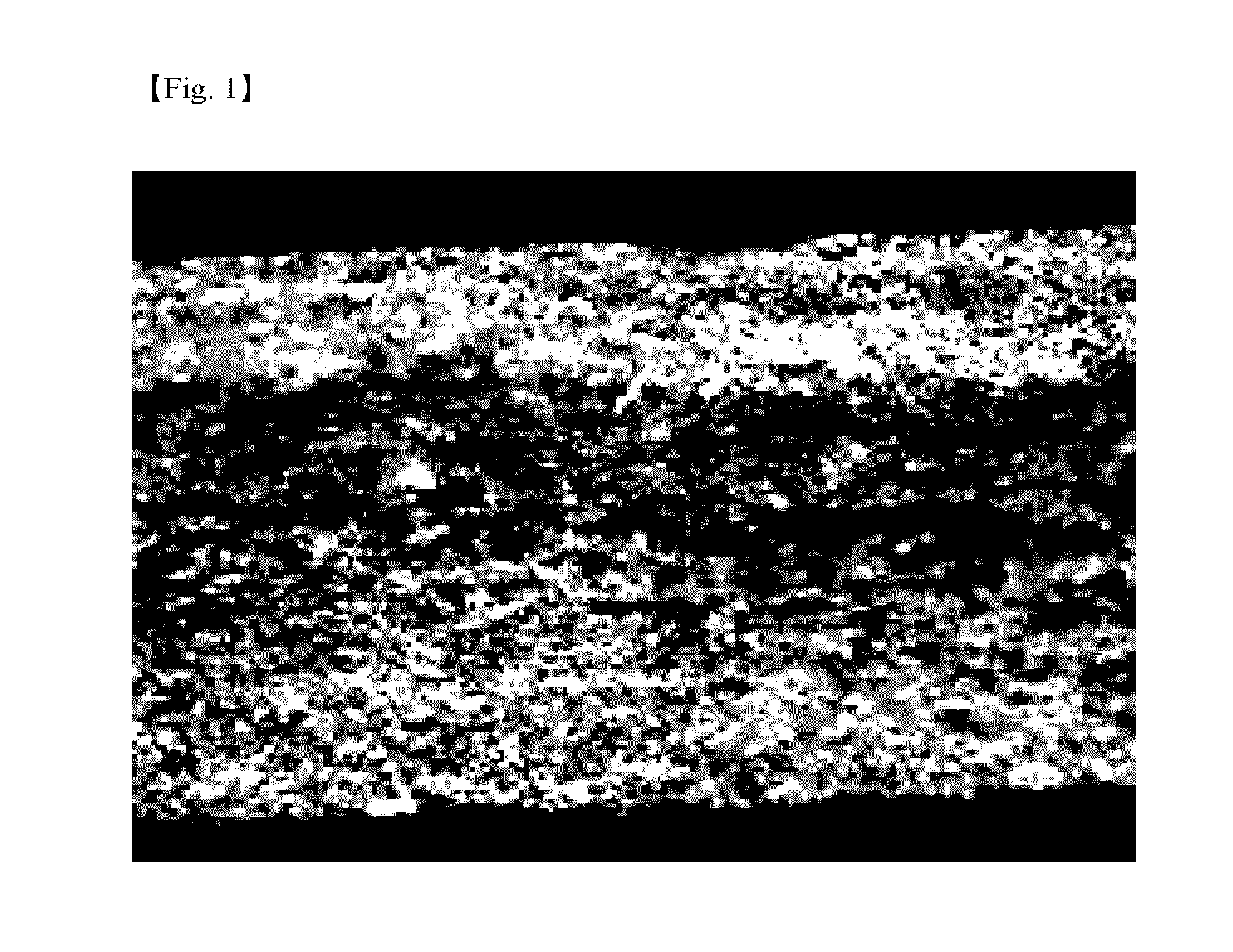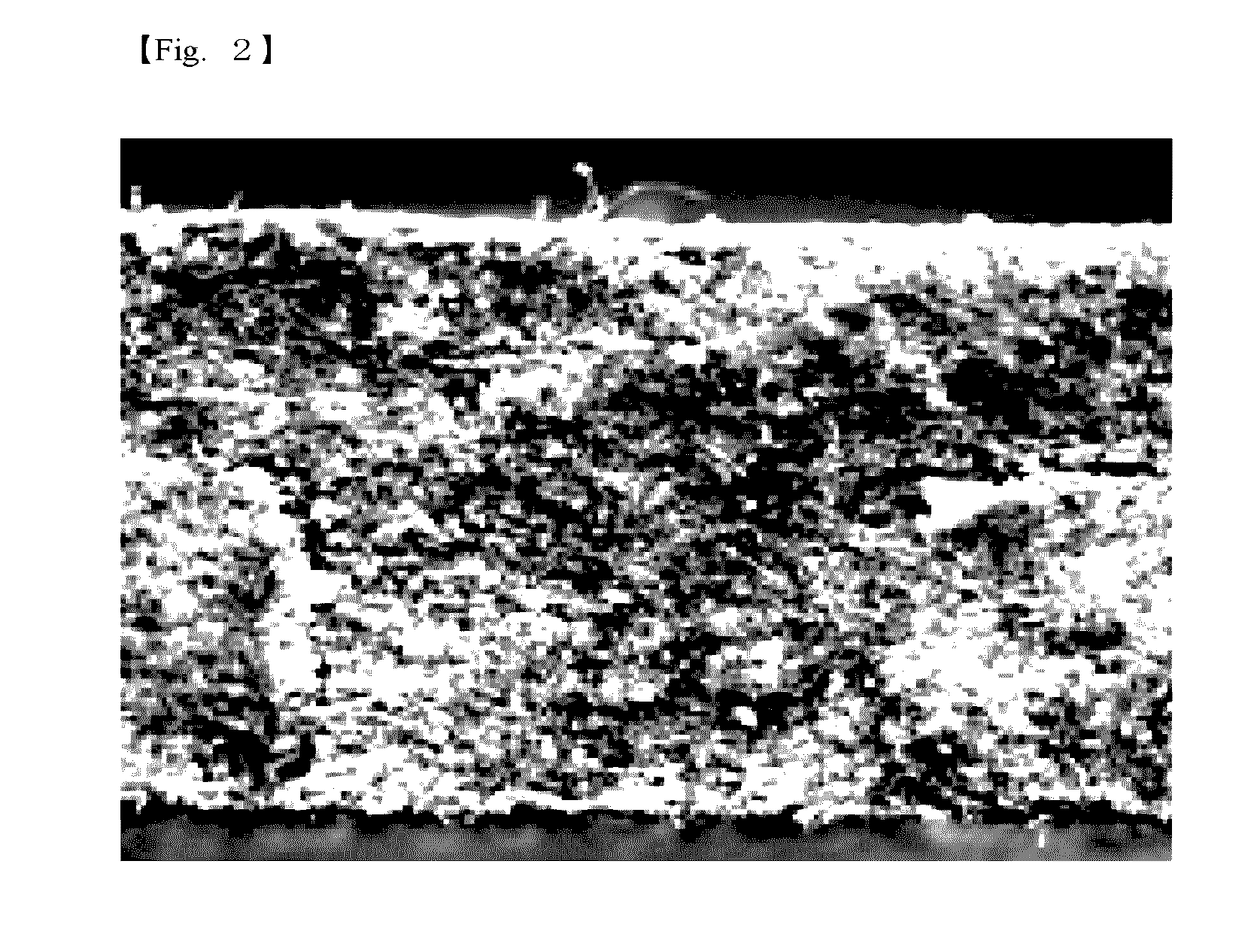Fiber-reinforced carbonated hydraulic inorganic molded plate and method for producing same
a technology of hydraulic inorganic molded plate and fiber reinforced carbonated, which is applied in the direction of climate sustainability, solid waste management, sustainable waste treatment, etc., can solve the problems of fiber reinforced carbonated inorganic molded plate that requires dimensional stability, and achieve excellent paintability, high bulk specific gravity, and high anti-water permeability
- Summary
- Abstract
- Description
- Claims
- Application Information
AI Technical Summary
Benefits of technology
Problems solved by technology
Method used
Image
Examples
example 1
[0146]As a PVA fiber, a fully saponified PVA having a degree of polymerization of 1700 (PVA1) was dissolved in water at a concentration of 16.5%, and boric acid was added at 1.6% relative to the PVA to prepare a spinning dope. The spinning dope was subjected to wet-spinning in a coagulation bath having a temperature of 70° C. and containing 11 g / L of sodium hydroxide and 350 g / L of sodium sulfate, and the spun fibers were drawn by a roller, neutralized, subjected to wet heat drawing, washed with water, and dried in a usual method, subjected to dry heat drawing at 235° C., and taken up such that the total draw ratio was 19 times in a heat treatment process of the same fiber production process. The obtained fiber had the fiber diameter of 7 μm and the fiber tenacity of 14.3 cN / dtex. The obtained fibers were cut having a fiber length of 4 mm (aspect ratio: 571).
[0147]Molded body: 1.5 parts by mass of the short-cut PVA fibers were added to a composition containing 3 parts by mass of pul...
example 2
[0148]A molded body was produced in the same manner as in Example 1 except that low heat cement (β-belite content: 50% by mass) was used as the cement. The performance of the obtained molded body product is shown in Table 1. Despite the short secondary curing period for 24 hours, the obtained molded body had a bulk specific gravity of 1.7 so that densification was greatly enhanced, a high flexural strength of 26 N / mm2, and a small dimensional change rate per specific gravity of 0.053%. Further, the molded body had satisfactory anti-water permeability and paintability.
example 3
[0149]A molded body was produced in the same manner as in Example 1 except that special cement (γ-belite content: 50% by mass) was used as the cement. The performance of the obtained molded body product is shown in Table 1. Despite the short secondary curing period for 24 hours, the obtained molded body had a bulk specific gravity of 1.7 so that densification was greatly enhanced, a high flexural strength of 24 N / mm2, and a small dimensional change rate per specific gravity of 0.041%. Further, the molded body had satisfactory the molded body had satisfactory anti-water permeability and paintability.
PUM
| Property | Measurement | Unit |
|---|---|---|
| aspect ratio | aaaaa | aaaaa |
| aspect ratio | aaaaa | aaaaa |
| humidity | aaaaa | aaaaa |
Abstract
Description
Claims
Application Information
 Login to View More
Login to View More - R&D
- Intellectual Property
- Life Sciences
- Materials
- Tech Scout
- Unparalleled Data Quality
- Higher Quality Content
- 60% Fewer Hallucinations
Browse by: Latest US Patents, China's latest patents, Technical Efficacy Thesaurus, Application Domain, Technology Topic, Popular Technical Reports.
© 2025 PatSnap. All rights reserved.Legal|Privacy policy|Modern Slavery Act Transparency Statement|Sitemap|About US| Contact US: help@patsnap.com



